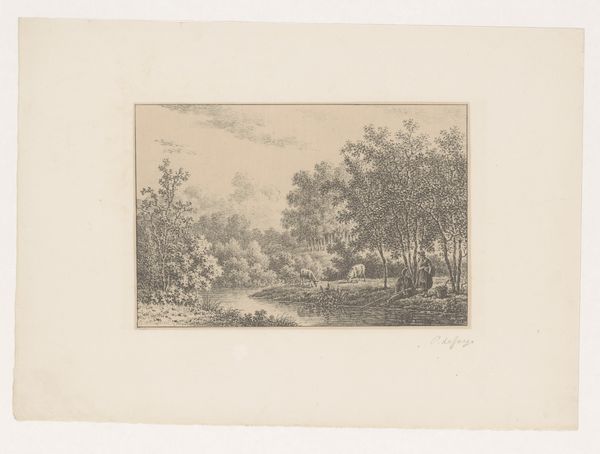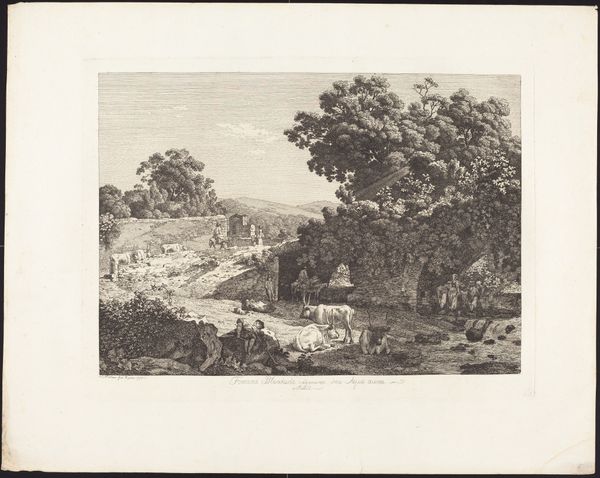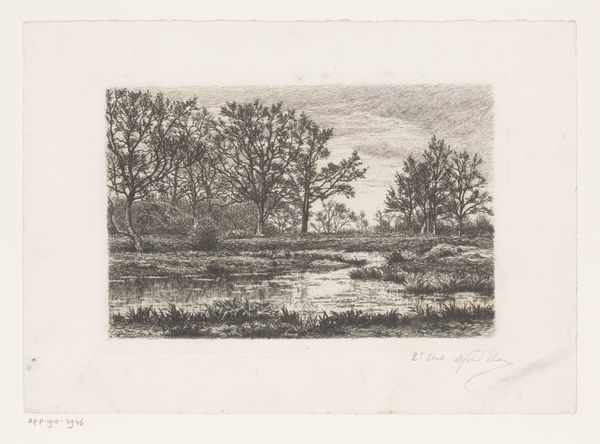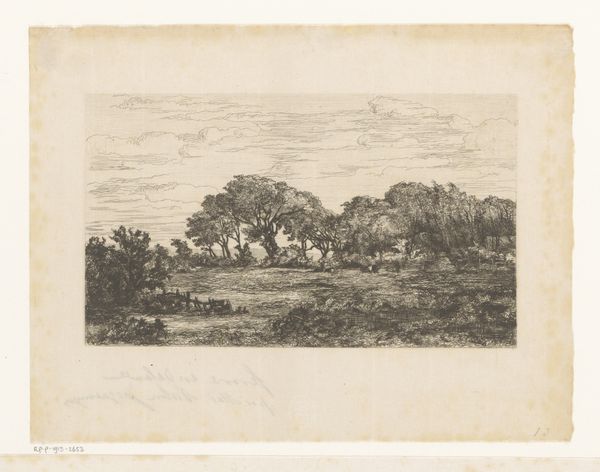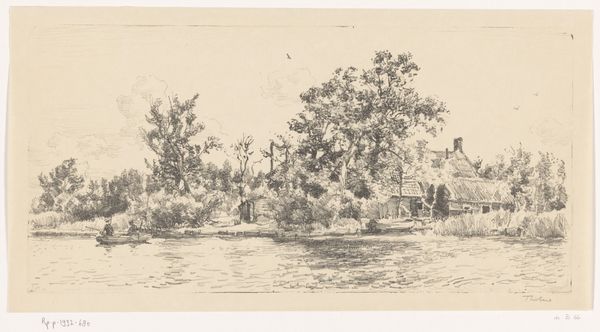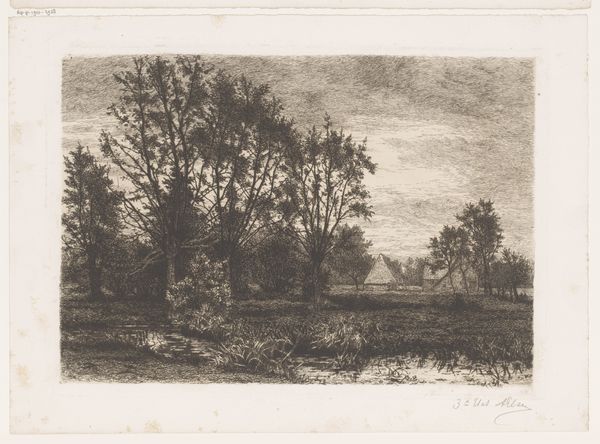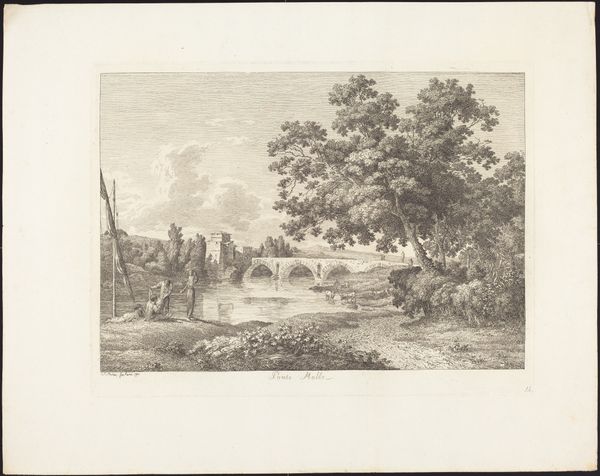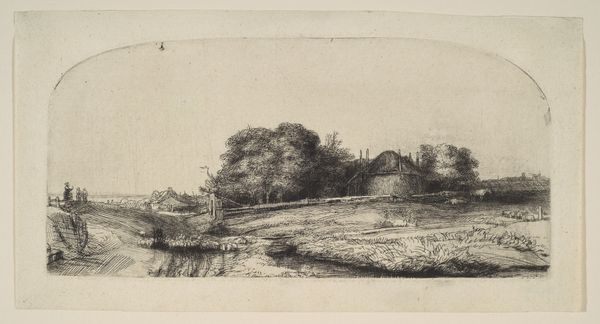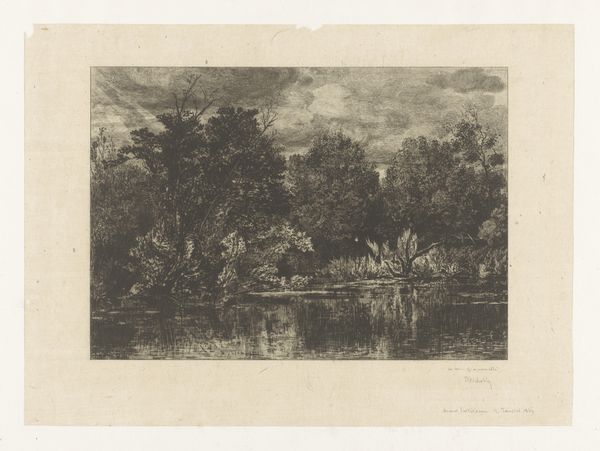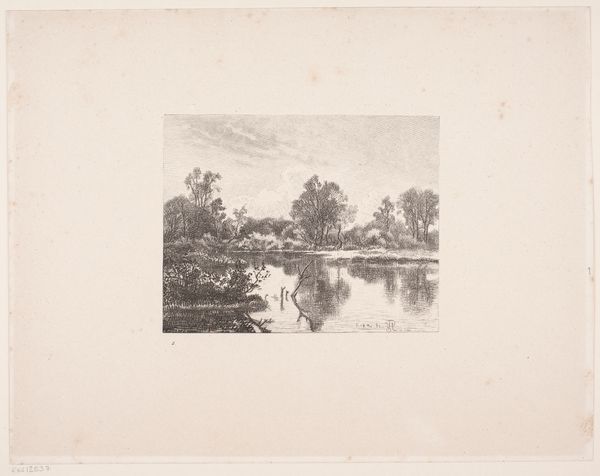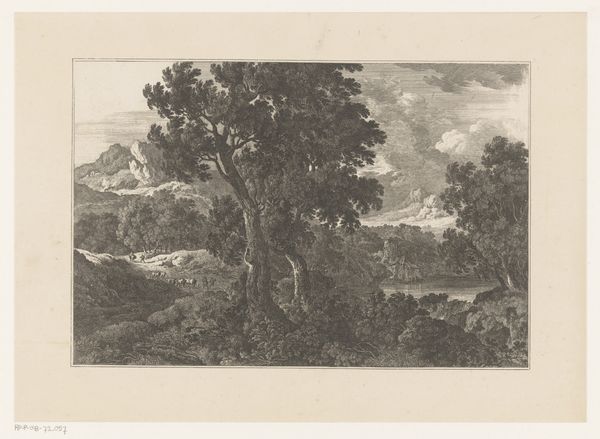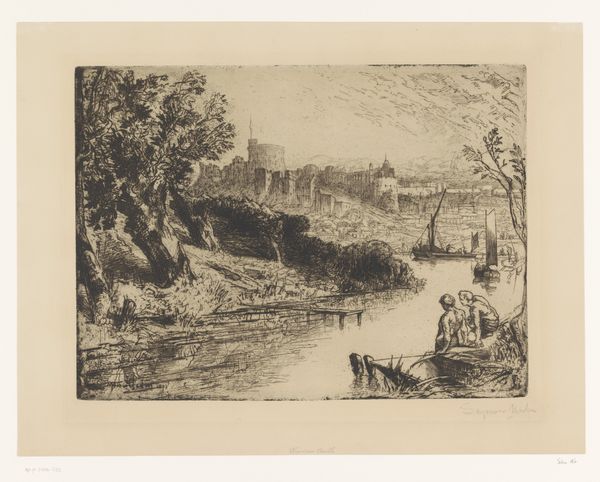
Dimensions: Plate: 9 7/16 × 15 9/16 in. (24 × 39.5 cm) Sheet: 12 7/8 × 18 1/4 in. (32.7 × 46.3 cm)
Copyright: Public Domain
Curator: This is "The Springs of the Albarine (Ain)," an etching made around 1870 by the French artist Adolphe Appian, currently held here at the Metropolitan Museum of Art. Editor: My initial impression is that of quietude; a melancholic stillness permeates this scene of a landscape fading into a gray horizon. The composition really holds my eye. Curator: It is evocative, yes, and very deliberate. Note how the etching captures the material essence of the Albarine, almost as if the river itself dictated the mark-making on the plate. He was known to work "en plein air". What the etching reveals, with its labor-intensive processes, is a Romantic vision filtered through the burgeoning Realist movement, wouldn't you agree? Editor: Precisely. There is a realism in how the artist renders form with such elemental lines—observe the trees, their bare branches outlined with fine strokes against the sky. Semiotically, these stark elements almost signify winter, or perhaps the end of a cycle. Curator: That connects strongly to how these prints were distributed and consumed in 19th century France. Think about the rise of industrialization—etchings like this romanticized, perhaps idealized, the pastoral, providing a material connection to the rapidly disappearing countryside. Appian, from his studio in Lyon, was actively participating in the era’s art market and broader conversations about labor, land use, and nostalgia. Editor: Absolutely, and by closely analyzing the water, there is such tonal variation! Light plays across its surface. Appian is clearly communicating a deep understanding and connection with nature, presenting it almost like a philosophical concept that can be observed from many angles. Curator: By using etching, Appian mass produced works that explored and perpetuated new ideas about landscape's cultural importance as rural life drastically changed due to manufacturing. We should reflect on the means, intention, and distribution to really unlock its lasting resonance today. Editor: It's an art form perfectly expressing how to represent—and perceive—the essence of light, form, and natural change, even across the gap of time. A visual poem that reveals a larger sense of balance and understanding between nature and humanity.
Comments
No comments
Be the first to comment and join the conversation on the ultimate creative platform.
